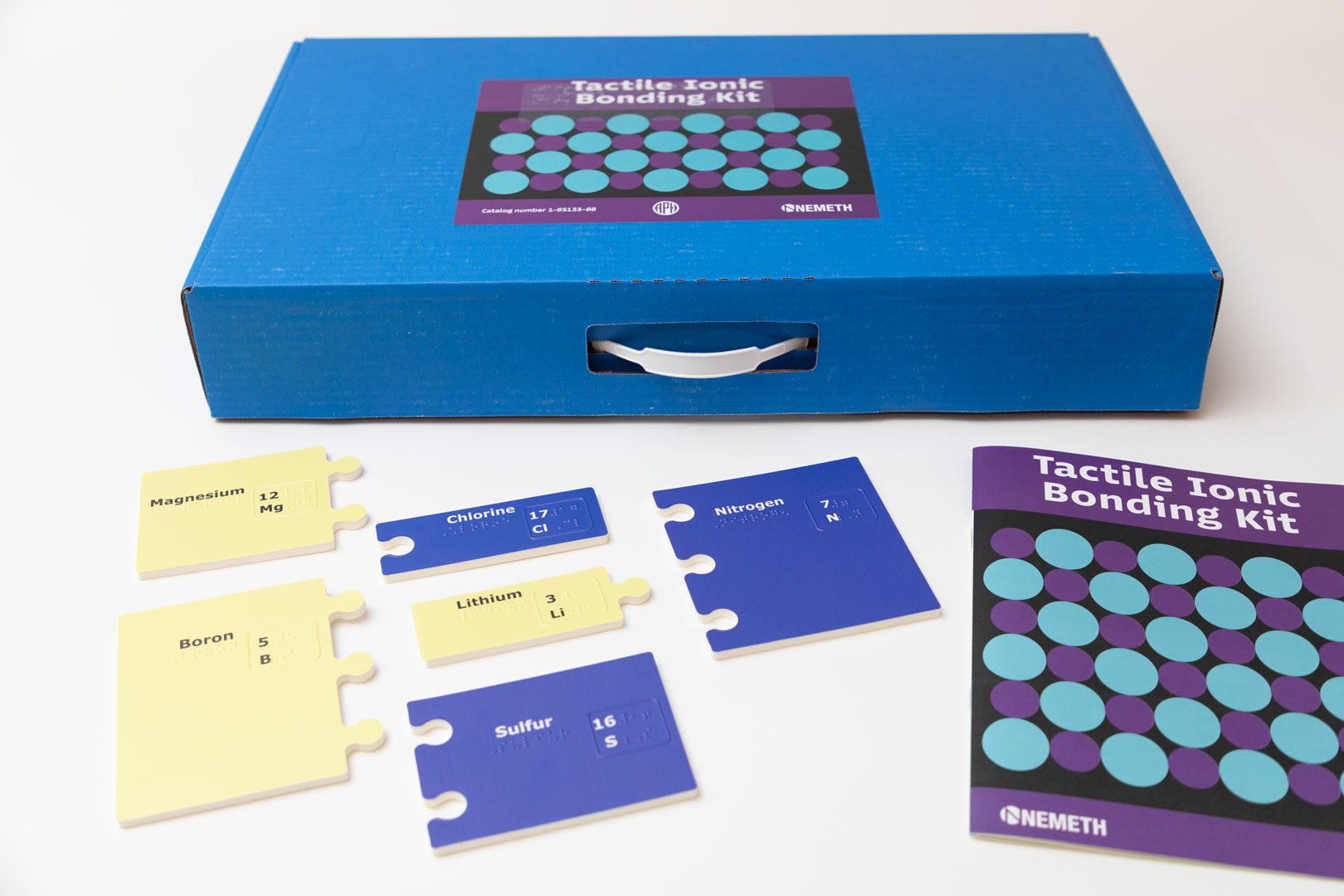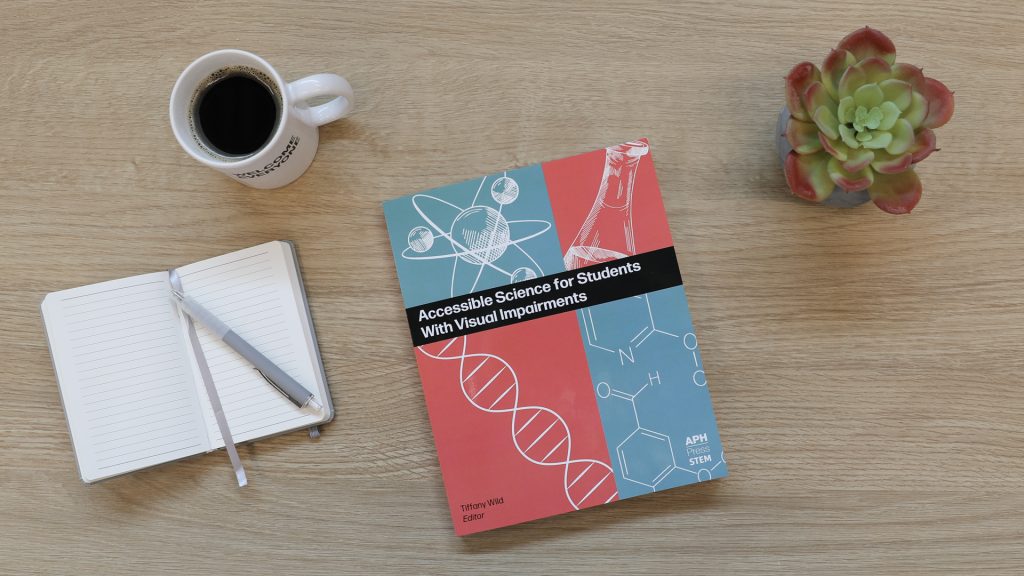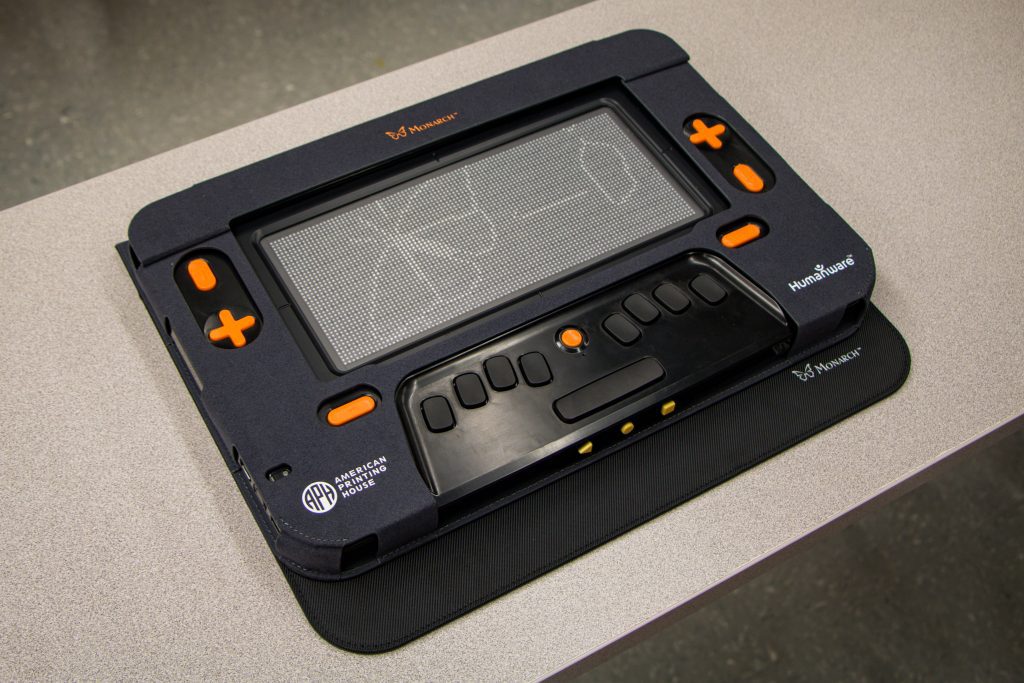Understand Chemistry Concepts with the Tactile Ionic Bonding Kit

Chemistry is a complex subject. Students study a variety of concepts, such as atomic structures, electron configurations, the periodic table, and more. Often, this information is translated into tactile diagrams for students who are blind or low vision that may be difficult to decipher. APH’s Tactile Ionic Bonding Kit (available in Nemeth and UEB) is an interactive model that brings the process of ionic bonding to life in a more tangible way.
Adam Stockhausen, the former science teacher at the Kentucky School for the Blind, wanted a simple way to show ionic bonding to his students. He made a model out of cardstock, but it was not very sturdy. After presenting his idea to APH, Science and Health Product Manager, Rosanne Hoffmann, worked to launch the new Tactile Ionic Bonding Kit.
Rosanne explained that an ionic bond involves the complete transfer of electrons from one atom to another. “Atoms of some elements have electrons to donate and are much more stable when they do so,” she said. “Atoms of other elements are more stable when they receive electrons. The key to an atom’s stability is fulfillment of the octet rule, which states that atoms are most stable when they have eight electrons in their outer shell.” The Tactile Ionic Bonding Kit includes a set of flexible, rectangular, foam manipulatives, or subunits, that represent elemental atoms. Each piece has the element’s name in large print and braille. In the right corner is a tactile square with the atomic number and symbol inside. Each subunit has tabs or notches. “The subunits with a tab represent positively charged atoms that can donate an electron,” said Rosanne.
“The tab represents an electron. The subunits with a notch represent negatively charged atoms that can receive or accept an electron. That empty space is where the tab would fit in.” The subunits with notches are dark blue with white print and braille, and the ones with tabs are yellow with black print and braille. The colors also help users remember the charge of the atom. To create bonds, students can connect the subunits together. For example, sodium chloride is formed when sodium’s tab is fitted into the notch in chlorine’s piece. This shows how sodium donates one electron to a chlorine atom, which accepts it. Sodium becomes positive, and chlorine becomes negative as they are bonded to form the compound commonly known as salt.
The Tactile Ionic Bonding Kit has 17 elemental atom subunits with multiples of each. Subunits can contain 1, 2, or 3 tabs or notches. To help students remember different elements, Rosanne suggests adding cues to their respective pieces. For example, teachers can glue a salt packet onto the sodium subunit, a piece of a pool noodle onto chlorine, a toothpaste cap onto fluorine, foil onto aluminum, and a sticker of the sun onto hydrogen. They can also add more elements to the kit with the included 34 blank subunits.
Our field testers saw great potential in the Tactile Ionic Bonding Kit. One said, “This is a wonderful representation of the bonding and how it works.” Another agreed, saying, “The puzzle pieces are a genius and simplified way of visualizing this bonding.” In addition, the kit and its components proved very engaging for the students. “The kids were really interested in them, and it made it more concrete and fun,” said a field tester.
Purchase the Tactile Ionic Bonding Kit. For more advanced models, check out the Azer’s Interactive Periodic Table Study Set.
Share this article.
Related articles

Accessible Science: Ensuring Science is for Everyone
The modern world thrives on innovation, and the best innovation comes from a multitude of perspectives working together. That’s what’s...

Unlocking a World of Scientific Discoveries with the Monarch
Science classes include a variety of graphics, which can be expensive and slow to produce. APH’s Monarch, is breaking down...
